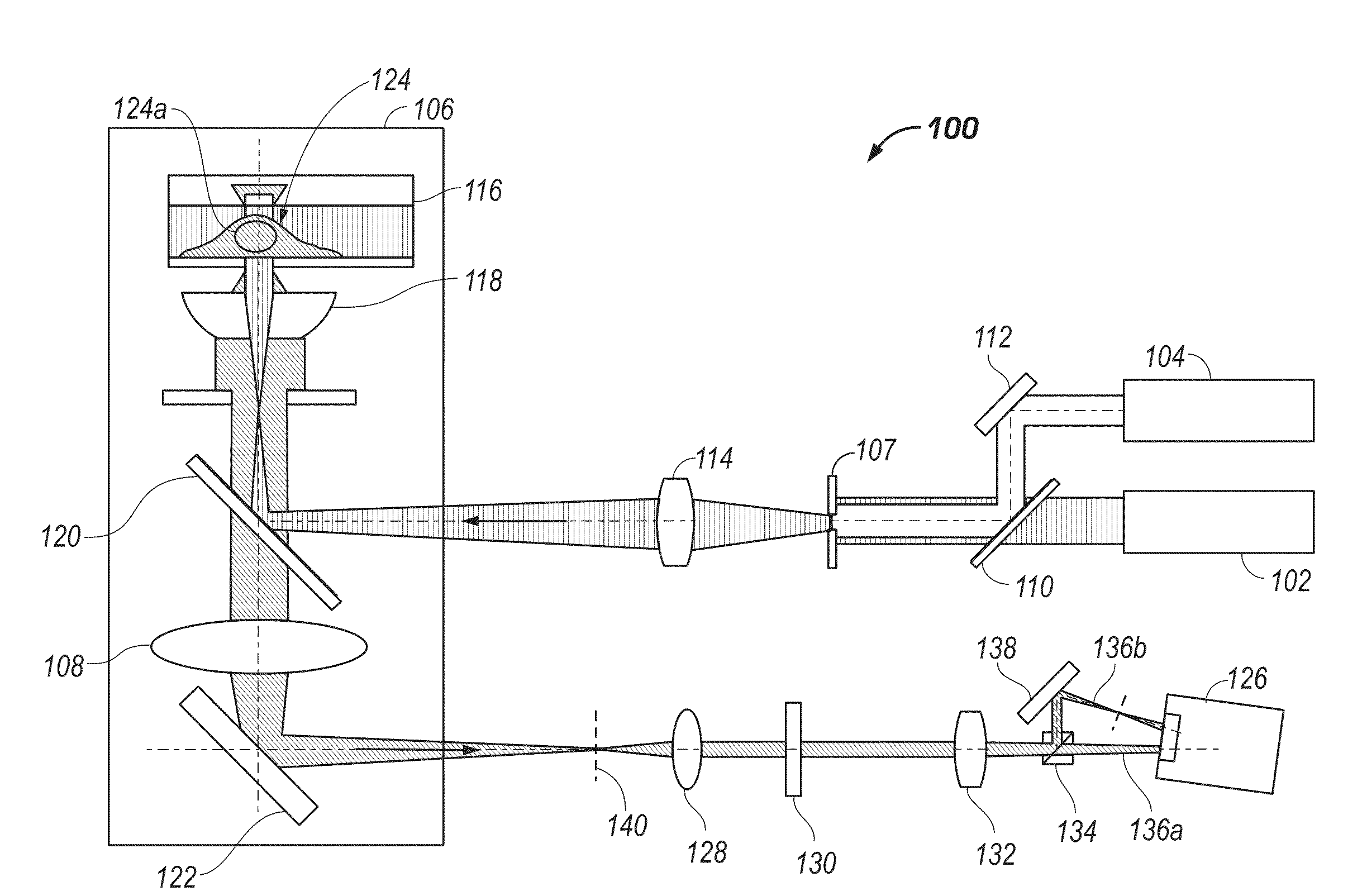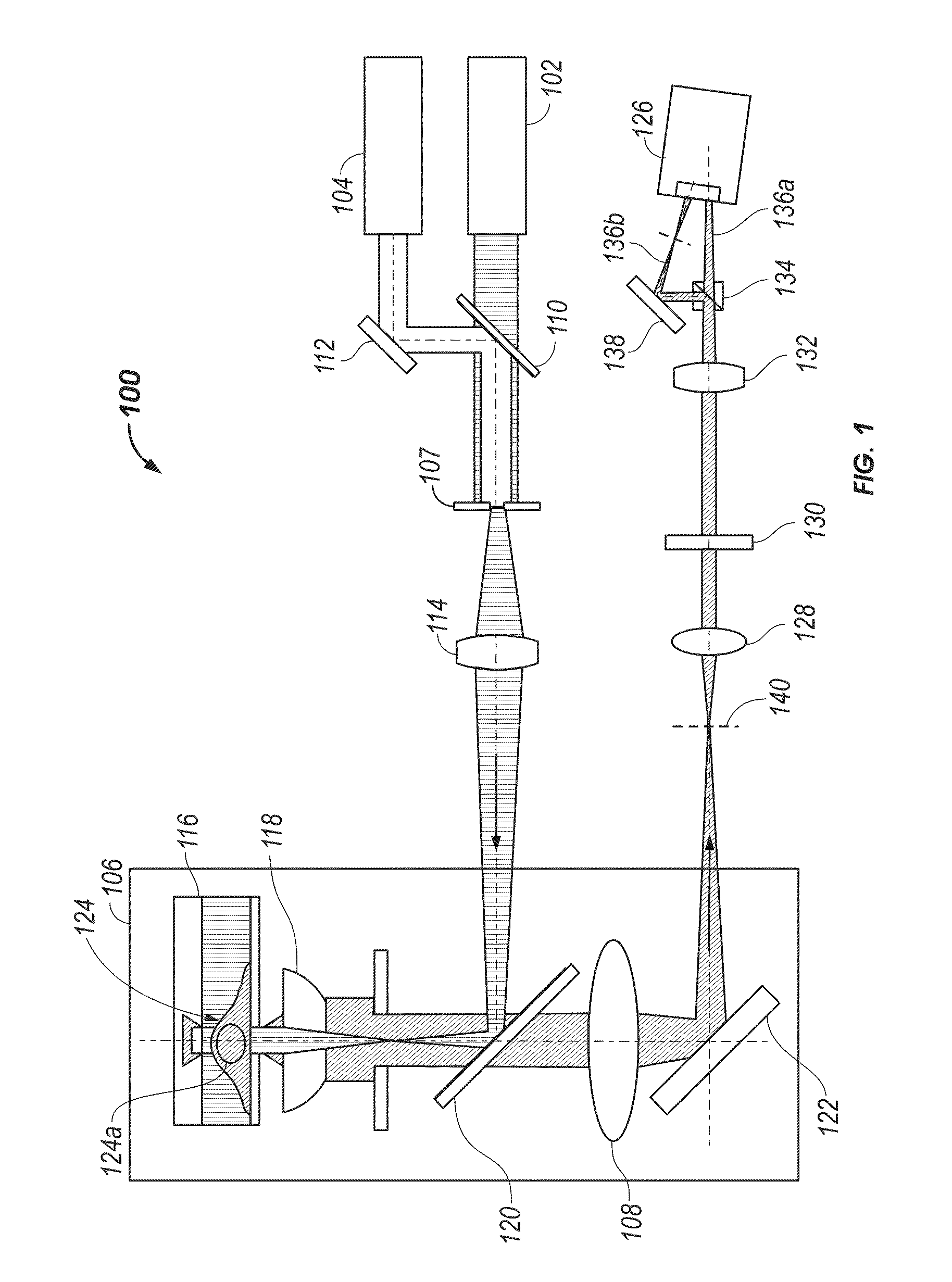3D Biplane Microscopy
a microscope and biplane technology, applied in the field of three-dimensional (“ 3d”) sub100 nanometer resolution by biplane microscope imaging, can solve the problems of limited application of these techniques to two-dimensional (“2d”) imaging, limited spatial resolution, and concealing sub-structur
- Summary
- Abstract
- Description
- Claims
- Application Information
AI Technical Summary
Benefits of technology
Problems solved by technology
Method used
Image
Examples
Embodiment Construction
[0034]While this invention is susceptible of embodiment in many different forms, there is shown in the drawings and will herein be described in detail preferred embodiments of the invention with the understanding that the present disclosure is to be considered as an exemplification of the principles of the invention and is not intended to limit the broad aspect of the invention to the embodiments illustrated.
[0035]Referring to FIG. 1, a biplane (“BP”) microscope system 100 allows 3D imaging at an unmatched resolution well below 100 nanometers in all three dimensions, resulting in at least a 100-fold smaller resolvable volume than obtainable by conventional 3D microscopy. The BP microscope system 100 is optionally a BP FPALM system, which is generally based on a conventional FPALM design. However, in contrast to conventional FPALM design, the BP microscope system 100 includes a modified detection path that allows the simultaneous detection from two focal planes. The simultaneous dete...
PUM
 Login to View More
Login to View More Abstract
Description
Claims
Application Information
 Login to View More
Login to View More - R&D
- Intellectual Property
- Life Sciences
- Materials
- Tech Scout
- Unparalleled Data Quality
- Higher Quality Content
- 60% Fewer Hallucinations
Browse by: Latest US Patents, China's latest patents, Technical Efficacy Thesaurus, Application Domain, Technology Topic, Popular Technical Reports.
© 2025 PatSnap. All rights reserved.Legal|Privacy policy|Modern Slavery Act Transparency Statement|Sitemap|About US| Contact US: help@patsnap.com



